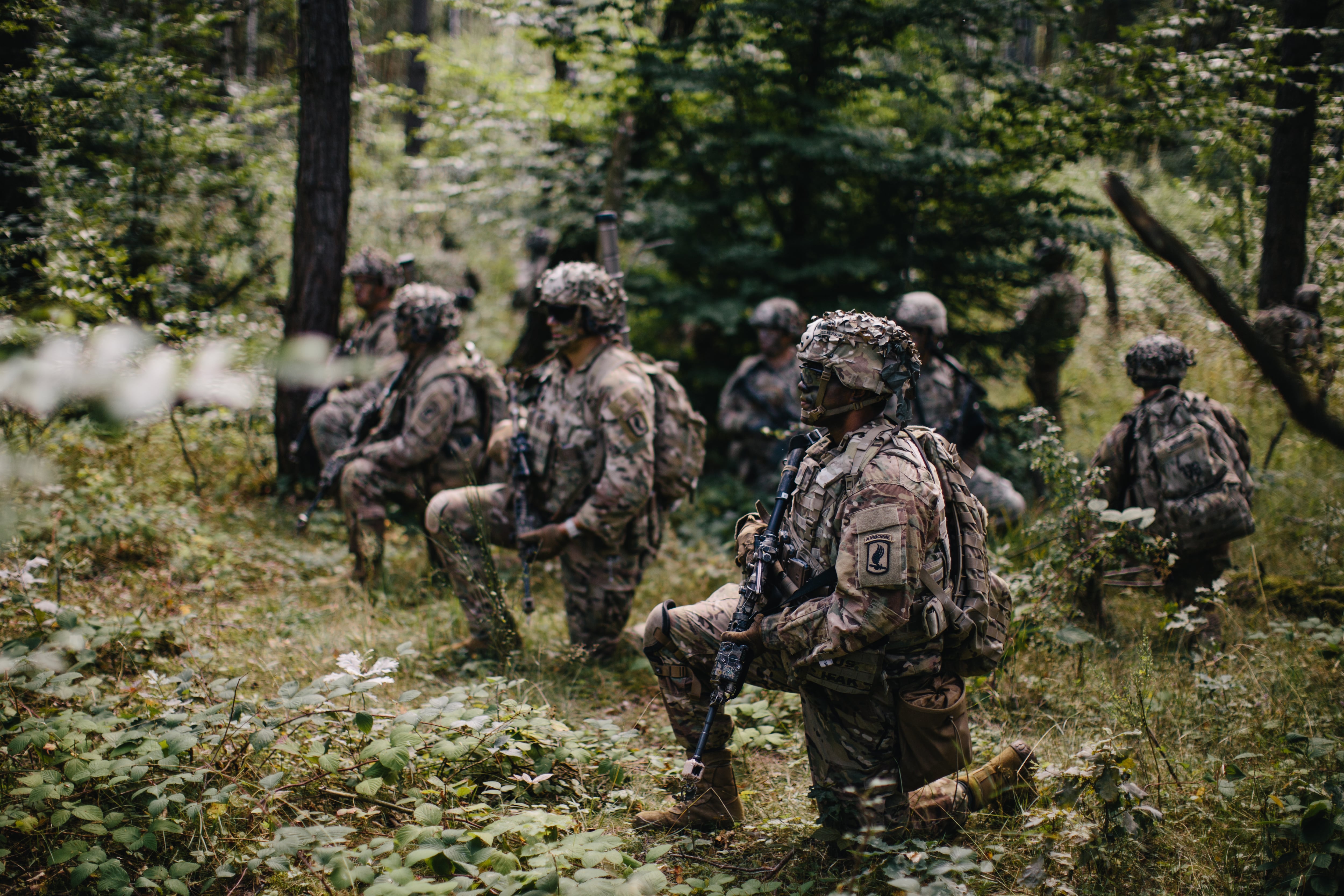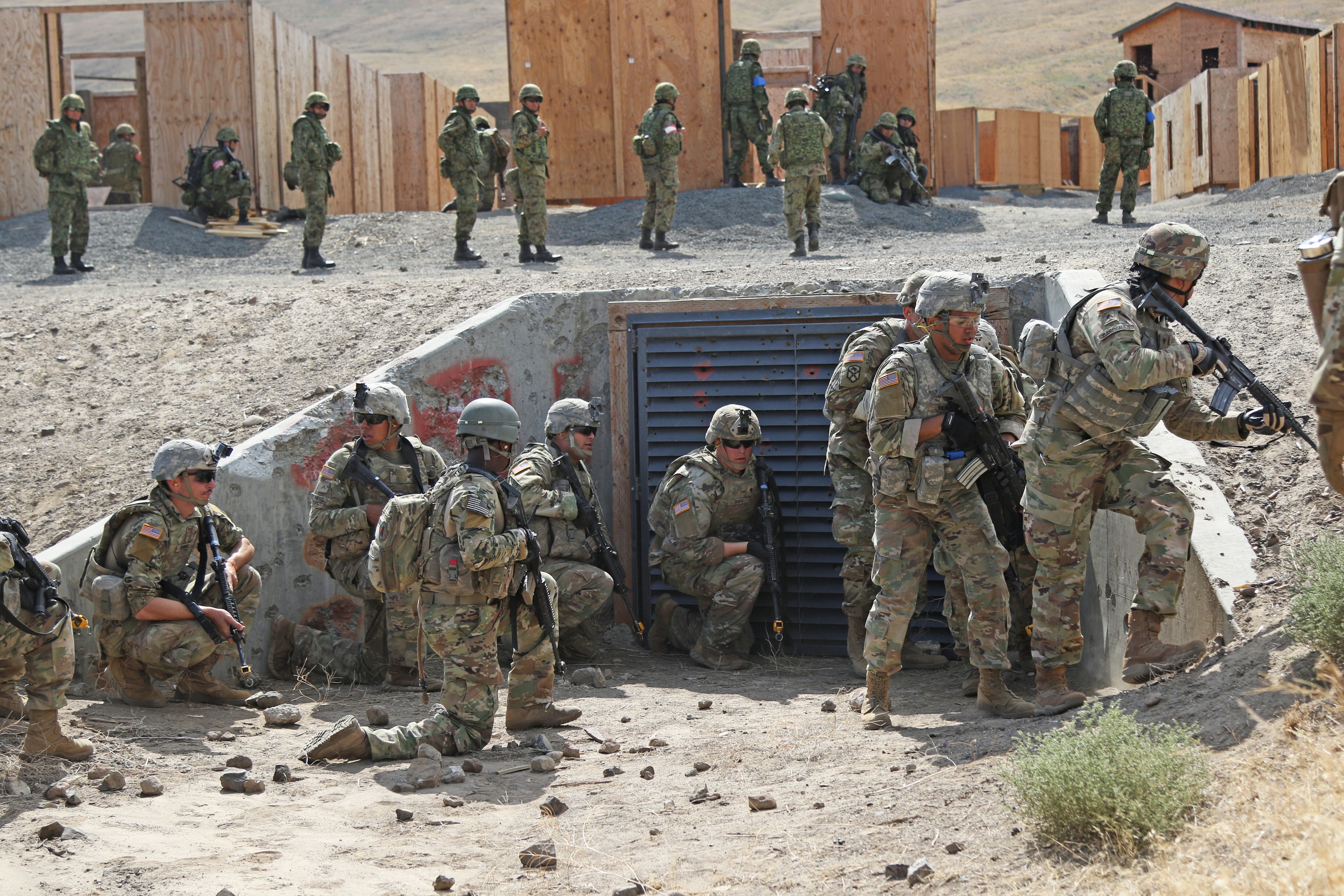WASHINGTON – Army National Guard leaders have formed a plan that would align their eight divisions across state lines putting them in a better position to contribute actual deployable divisions to a major combat operation, should big Army approve.
Guard director Lt. Gen. Daniel Hokanson laid out the evolving map of Guard division headquarters across the nation at a panel Tuesday at the Association of the U.S. Army’s Annual Meeting and Exposition.
That map carves up state lines for where a particular Guard state unit would report. For instance, the Texas-based 36th Infantry Division not only controls all Guard soldiers in the Lone Star State but also would have the western half of New Mexico and southern half of Arkansas in its ranks.
RELATED

That blurs what have become over time more state-line driven partnerships.
“This is about building National Guard divisions as divisions that are capable of deploying as divisions and going into the fight,” said Maj. Gen. Patrick Hamilton, 36th Infantry Division commander.
While the changes would not affect the state adjutant general’s authority of the Guard forces under their command, it would give divisions a better handle on training and preparing for a mass mobilization, should that be necessary, panelists said.
Despite decades of late Cold War backseat positions, the Guard units became part of the Army’s 58 brigade combat team formations and deployed extensively to Iraq and Afghanistan over the past two decades. But, as the active Army repositions its “units of action” from BCTs to divisions, so must the Guard, Hokanson said.
And there’s an element of blast from the past here, too. The Guard formed up in 1917 with 17 divisions all of which deployed to Europe for World War I. It grew to 19 divisions in World War II, all of which deployed again.
By the 1950s, it had expanded to 27 divisions, though only two deployed to the Korean War.
And the new alignments that blend the states together actually fall more closely with the connections of the early days of the Guard, Hokanson said.
While the main effort is to provide for better training and push the control mechanisms back up to the divisions from the brigade, a side benefit is career progression.
For example, the deputy commanding general for the Virginia Guard-based 29th Infantry Division is a Mississippi Guard soldier, said Maj. Gen. John Epperly, head of the 29th Infantry Division.
That was the result of a nation-wide talent search for the position, which is different than historically drawn lines at the state even for staff positions.
“We’ve got to kind of grow the pool of officers,” Epperly said. “We can’t say ‘if they’re not from Virginia or Maryland, we’re just not going to look at them.”
That damages the command’s ability to build the best large-scale combat operations team, he said.
The effect translates to the enlisted ranks, too.
Command Sergeant Major of the Army National Guard John Sampa said that the move would give soldiers a chance to hold division-level NCO assignments not previously available.
Command Sgt. Maj. Corey Cush, 42nd Infantry Division, added that the mobility would help with retention, especially at senior ranks.
But in the training space, the move would solve problems that Guard leaders are seeing emerge in some of the same ways as their active counterparts, but more wide-reaching.
That’s because by fighting as BCTs or other smaller-sized units since 2001, Army leaders have seen some skills atrophy.
“We don’t focus as much on how we train and integrate warfighting functions across all the enablers,” Hamilton said.
Some of that is due to planning. Guard units heading into a warfighter exercise, a major stress test, might not know what units they’ll be working with until a year out from the event, he said.
With better coordination under a division headquarters, commanders could better plan and make the best use of the units they’ll be working with for the exercise.
Epperly noted that while he has soldiers in his ranks with 10 to 15 years’ experience in the counterinsurgency fight, large-scale combat operations call on a different set of skills and there is a steep learning curve, especially at echelon.
“We’re getting folks out of the battalion and they don’t understand what a deep fight is,” Epperly said.
To better prepare young officers for that shift of focus, the Guard has instituted a Maneuver Academy, which starts two years out from their warfighter exercise or combat training center rotation with robust reading followed by command post exercises.
That, he said, makes a much better maneuver officer than the existing program of perhaps a few days or weeks of instruction before they head into an exercise preparation cycle.
And aligning the divisions with the lower echelons can eliminate gaps in mentorship, so that brigade commanders have an example and sounding board as they ready themselves for division command.
Some of that is also being familiar with units that may come under division command that the officer hadn’t encountered before.
For example, few brigade staff on the Guard side have had an attack aviation unit at their fingertips. But once at division, it is a ready asset.
The alignment could see its first division in that new configuration by 2023, if approved by Army leadership, Hokanson said. He’s scheduled to submit the recommended plan by December.
Todd South has written about crime, courts, government and the military for multiple publications since 2004 and was named a 2014 Pulitzer finalist for a co-written project on witness intimidation. Todd is a Marine veteran of the Iraq War.




